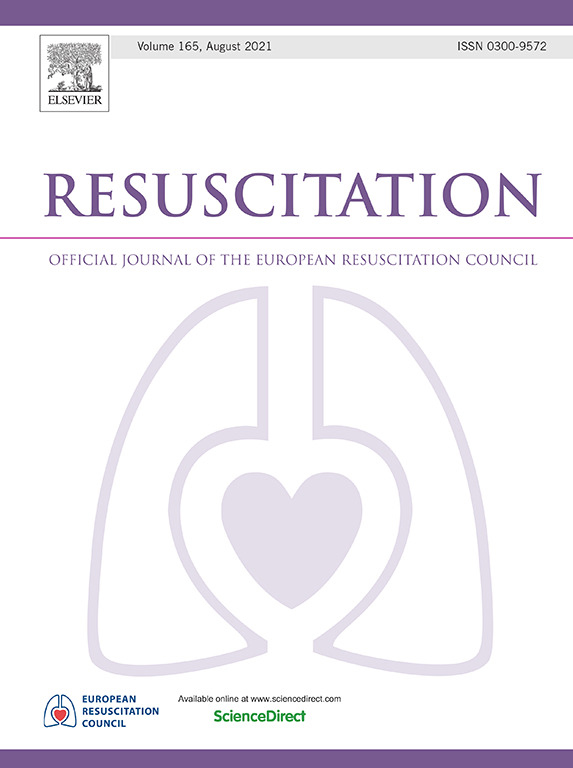Associations of manual defibrillator compared to automated external defibrillator usage with defibrillation and resuscitation quality during in-hospital cardiac arrest
IF 6.5
1区 医学
Q1 CRITICAL CARE MEDICINE
引用次数: 0
Abstract
Background
Manual Defibrillators and Automated external defibrillators (AEDs) are frequently used during in-hospital cardiac arrest (IHCA), yet comparisons of their performance remain limited. This study aimed to compare the accuracy of rhythm analyses and chest compression pause durations of manual defibrillator and AED usage during IHCA.
Methods
In this multicenter cohort study, we analysed thoracic impedance data and electrocardiograms from manual defibrillators and AEDs used during IHCA occurring in the Central Denmark Region between April 2019 and March 2024. The primary outcome was the difference in accuracy of rhythm analyses, while secondary outcomes included chest compression pause duration for rhythm analysis and defibrillation.
Results
A total of 529 cardiac arrests were analysed, yielding 1715 rhythm analyses from manual defibrillators and 602 AED analyses. The difference in the accuracy of rhythm analyses between a manual defibrillator and an AED was statistically not significant with an adjusted odds ratio of 0.5 (95%-CI: 0.2; 1.3). Manual defibrillator use was associated with 3.2 s (95%-CI: 1.7; 4.9) shorter pauses for rhythm analysis and 7.9 s (95%-CI: 5.9; 9.9) shorter peri-shock pauses.
Conclusion
Using manual defibrillators compared to AEDs was not associated with a higher accuracy of rhythm analyses, but with shorter chest compression pause durations for rhythm analysis and shorter peri-shock pauses.
人工除颤器与自动体外除颤器的使用与院内心脏骤停期间除颤和复苏质量的关系
手动除颤器和自动体外除颤器(aed)在医院内心脏骤停(IHCA)中经常使用,但对其性能的比较仍然有限。本研究旨在比较IHCA期间使用人工除颤器和AED的心律分析和胸按压暂停时间的准确性。在这项多中心队列研究中,我们分析了2019年4月至2024年3月在丹麦中部地区发生的IHCA期间使用的手动除颤器和aed的胸阻抗数据和心电图。主要结局是心律分析准确性的差异,而次要结局包括心律分析和除颤的胸按压暂停时间。结果共分析了529例心脏骤停,其中手工除颤器心律分析1715例,AED心律分析602例。手动除颤器与AED的心律分析准确性差异无统计学意义,校正优势比为0.5 (95% ci: 0.2;1.3)。手动除颤器使用与3.2 s相关(95% ci: 1.7;4.9)节奏分析的停顿时间更短,为7.9 s (95% ci: 5.9;9.9)更短的震前暂停。结论与aed相比,使用手动除颤器与心律分析的准确性不相关,但与心律分析的胸按压暂停时间和休克周围暂停时间较短相关。
本文章由计算机程序翻译,如有差异,请以英文原文为准。
求助全文
约1分钟内获得全文
求助全文
来源期刊

Resuscitation
医学-急救医学
CiteScore
12.00
自引率
18.50%
发文量
556
审稿时长
21 days
期刊介绍:
Resuscitation is a monthly international and interdisciplinary medical journal. The papers published deal with the aetiology, pathophysiology and prevention of cardiac arrest, resuscitation training, clinical resuscitation, and experimental resuscitation research, although papers relating to animal studies will be published only if they are of exceptional interest and related directly to clinical cardiopulmonary resuscitation. Papers relating to trauma are published occasionally but the majority of these concern traumatic cardiac arrest.
 求助内容:
求助内容: 应助结果提醒方式:
应助结果提醒方式:


